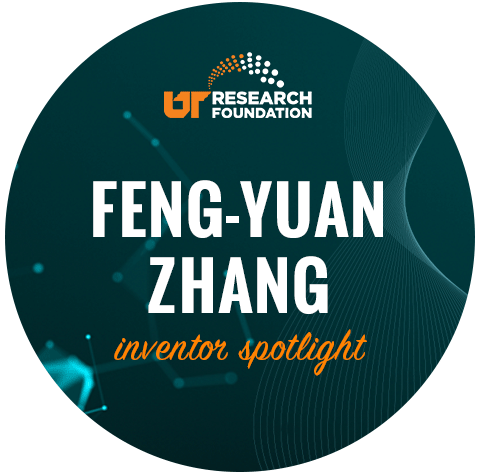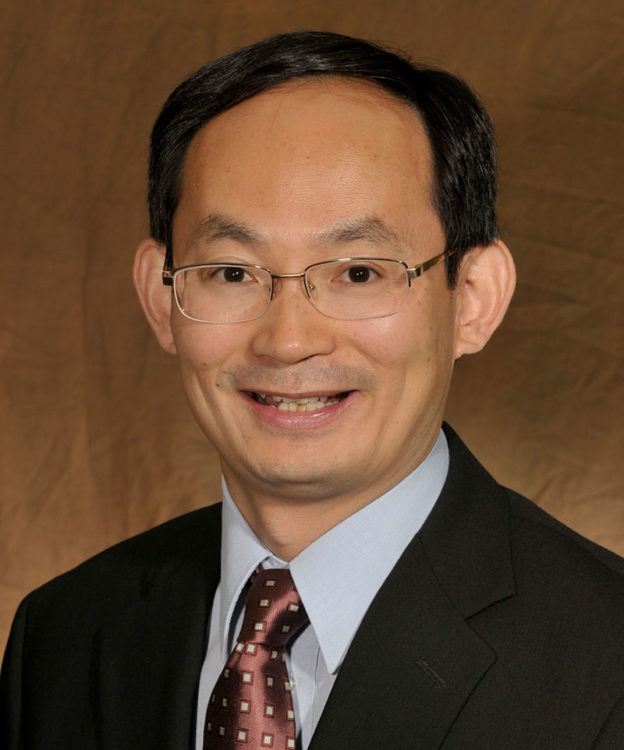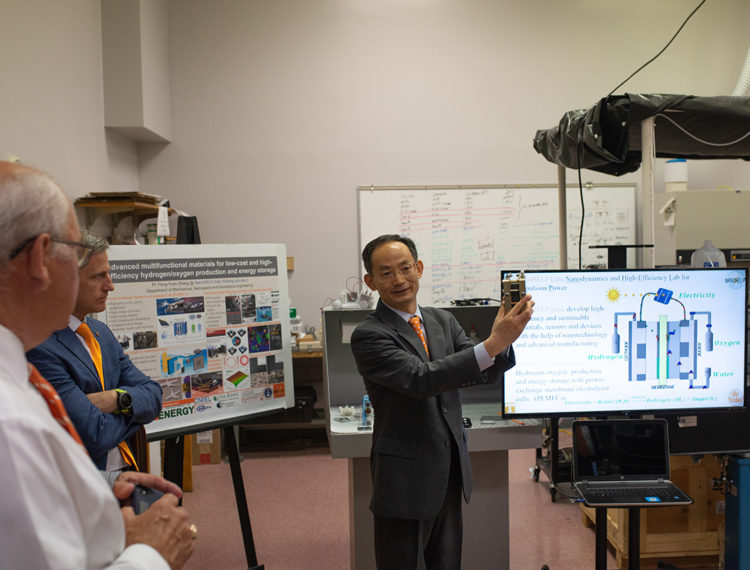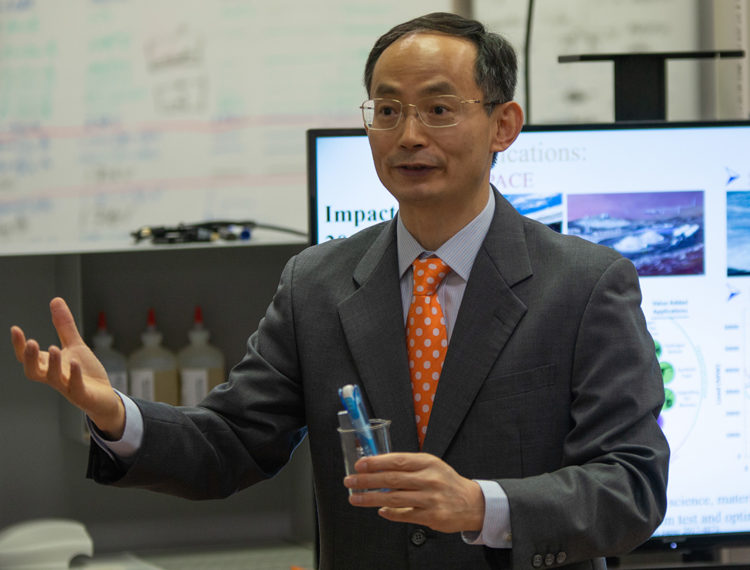 Making Electrolysis More Affordable and Efficient
Making Electrolysis More Affordable and Efficient
With zero carbon emissions, hydrogen is a promising alternative fuel and energy storage medium that may help power more vehicles, provide electricity, reduce carbon dioxide to high-value products, produce next-generation ammonia, and heat buildings in the movement toward a sustainable future. There’s just one catch: though hydrogen use doesn’t emit greenhouse gases, its production often does.
According to the U.S. Department of Energy, 95% of all hydrogen fuel is currently produced through thermal processes like natural gas reforming, which creates a small amount of carbon dioxide as a byproduct. Other methods like water electrolysis, which uses an electric current to separate water into oxygen and hydrogen in an electrolyzer, yield hydrogen without producing emissions; however, they are traditionally more costly and less efficient than thermal processes.

One University of Tennessee researcher seeks to make hydrogen a more viable source for high-efficiency energy conversion and storage through his work on nanotechnology and micro-/nano-electromechanical systems (MEMS/NEMS).
Dr. Feng-Yuan Zhang is a professor of Mechanical, Aerospace and Biomedical Engineering and founder of the NanoHELP Lab at the UT Space Institute (UTSI), University of Tennessee, Knoxville. The NanoHELP group mission is to “develop high-efficiency, low-cost, and sustainable energy and propulsion devices, including fuel cells, electrolyzers, batteries, chemical engines, and electric thrusters.”
In 2018, the DOE awarded Zhang and his collaborators $2 million to further develop fuel cell and hydrogen technologies. Building on work already conducted in his lab, Zhang discovered how to make novel electrodes of proton exchange membrane electrolyzer cells to electrochemically split water into hydrogen and oxygen more efficiently and affordably than traditional water electrolysis methods.
Speaking about his work to create a more sustainable future with hydrogen fuel, Zhang said he doesn’t expect only one solution to solve the world’s energy and climate problems. He emphasizes the importance of innovations, technology integration, and the significance of interdisciplinary collaborations, expressing gratitude for “the great honor to work with a world-class teams and top-notch collaborators.”
“Hydrogen will play an increasingly important role in the sustainable future,” said Zhang. “I really think that hydrogen energy will help us reach energy sustainability when combined with other technologies.”
Spanning a long career, Zhang’s research reaches beyond MEMS/NEMS. Some of his other primary areas of interest include electrochemical energy storage and conversions; micro-/ nano-scale fluidics, transport, heat transfer, and reaction; novel multifunctional materials; low-emission electric propulsion and high-efficiency combustion engines; alternative fuel and renewable energy; hybrid energy systems; thermal control and thermal management; and advanced spectroscopies.


Zhang has submitted eight disclosures to UTRF since 2012 on various technologies ranging from a low-cost electrolyzer to green synthesis platinum of nanowires. When asked about partnering with UTRF he emphasized, “When you work with UTRF, you get a very quick response. UTRF Vice President Maha Krishnamurthy and her team really do an amazing job.”
Currently, UTRF is working on Zhang’s novel method that allows reduction of nitrogen to ammonia under ambient conditions like room temperature and atmospheric pressure.
“Dr. Zhang is one of the easiest researchers to work with, he is very approachable and always there to help us move the technology further,” UTRF Assistant Technology Manager Kusum Rathore said. “UTRF enjoys partnering with forwarding-thinking individuals like Dr. Zhang who want to use their technology to make the world a better place.”
Though the pandemic has caused challenges for him and his lab, Zhang appreciates the leadership of UT and UTSI, along with his group members and collaborators who are working hard to meet project delivery dates. Moving forward, he wants to further collaborate with other researchers to develop technological innovations, scale up, create more jobs, and help DOE reach its energy goals.